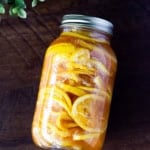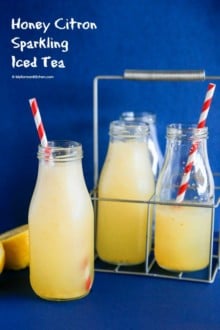Bright, sweet, and a little tangy, this lemon cheong is made with thinly sliced lemon, a touch of ginger, and a mix of honey and sugar. It’s wonderful as a warm tea in winter, a sparkling lemonade in summer, or even as a dressing base.
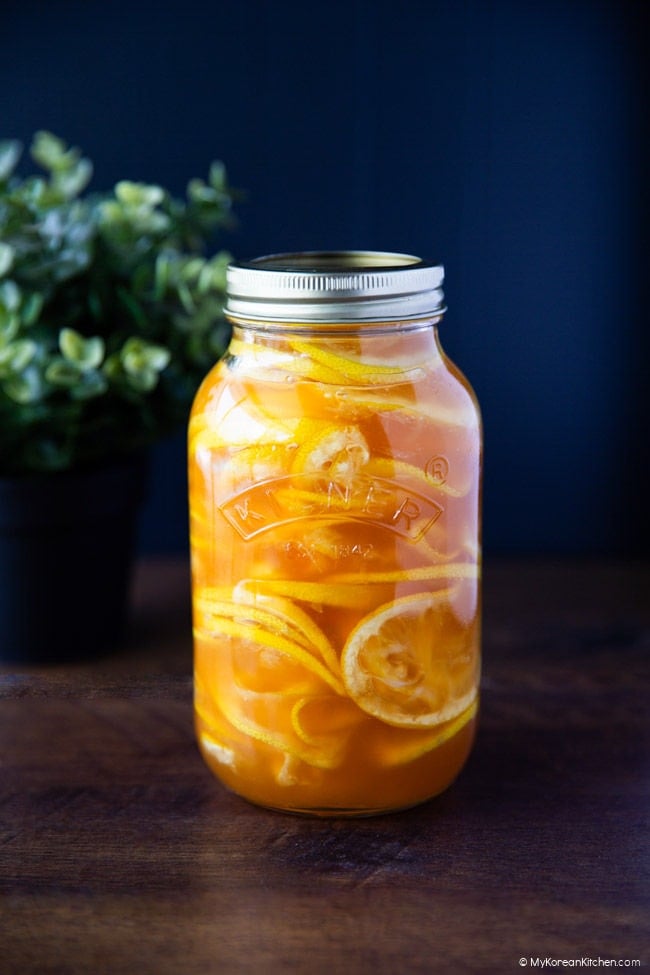
What is Lemon Cheong
Cheong (청) is a traditional Korean fruit preserve made by layering fruit with sugar or honey. As it rests, the fruit naturally releases its juices, turning into a sweet, tangy syrup that can be used in teas, drinks or even desserts.
Many Korean homes keep a jar or two in the fridge. The most often yuja cheong (citron preserve), which I’ve shared before. It’s one of those little comforts that warms you in winter when stirred into hot tea, and feels bright and refreshing in summer when mixed with sparkling water.
This lemon cheong is made with thinly sliced lemon, a touch of ginger, and a mix of honey and sugar. It’s soothing as a tea, zesty as a lemonade, and even lovely as a base for dressings or desserts. When I tested it with only honey at a 1:1 ratio, I found the honey flavor a little too strong, almost overpowering the fresh lemon taste. A mix of sugar and honey gives a brighter, cleaner flavor that lets the lemon shine through beautifully.
Why You’ll Love This Recipe
- Soothing and comforting as a hot tea in winter
- Bright, zesty, and refreshing with sparkling water in summer
- Versatile enough for teas, lemonades, desserts, or even light dressings
- Simple to make and keeps beautifully in the fridge
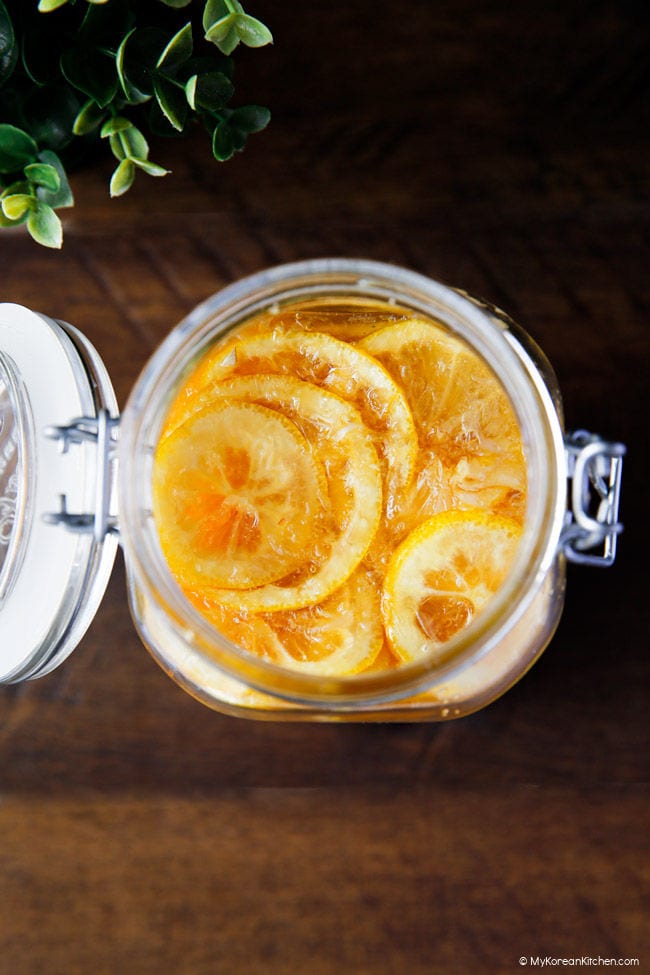
Ingredients
- 640 g (22.6 oz, about 5 to 6) lemons
- 60 g (2.1 oz) fresh ginger
- 350 g (12.3 oz) honey
- 350 g (12.3 oz) white sugar
How to Make Lemon Cheong
1. Prepare and slice the lemons
Scrub the lemons thoroughly in hot water with a little vinegar and baking soda to remove any wax or residue. Rinse well and pat them completely dry with kitchen paper. Then slice them thinly and remove all the seeds, as they can make the syrup taste bitter.

2. Prepare the ginger
Peel the ginger and either finely grate it or blend it until finely minced (slice it thinly first if using a blender). Wrap the grated or blended ginger in clean muslin or cheesecloth and squeeze firmly to extract the juice.
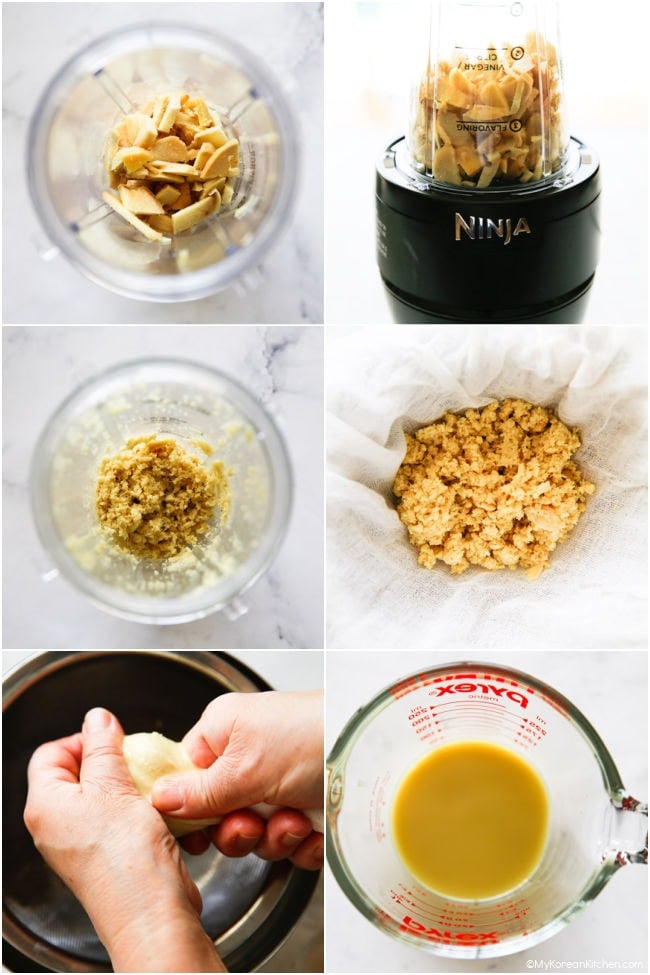
3. Combine everything
In a large mixing bowl, combine the lemon slices and ginger juice. Add the sugar and honey, then mix gently until all the lemon slices are evenly coated and the sugar starts to dissolve.

4. Pack
Using clean tongs, pack the mixture neatly into a sterilized glass jar. Seal the lid and let it sit at room temperature for 24 hours to help the sugar dissolve and the flavors meld.

5. Store and serve
After 24 hours at room temperature, give the jar a gentle stir or shake to help the sugar dissolve. Then transfer it to the refrigerator. Shake it gently every now and then while it matures to keep the mixture evenly combined. The lemon syrup will be ready to use after 3 days. Store it in the fridge and enjoy within 3 months.
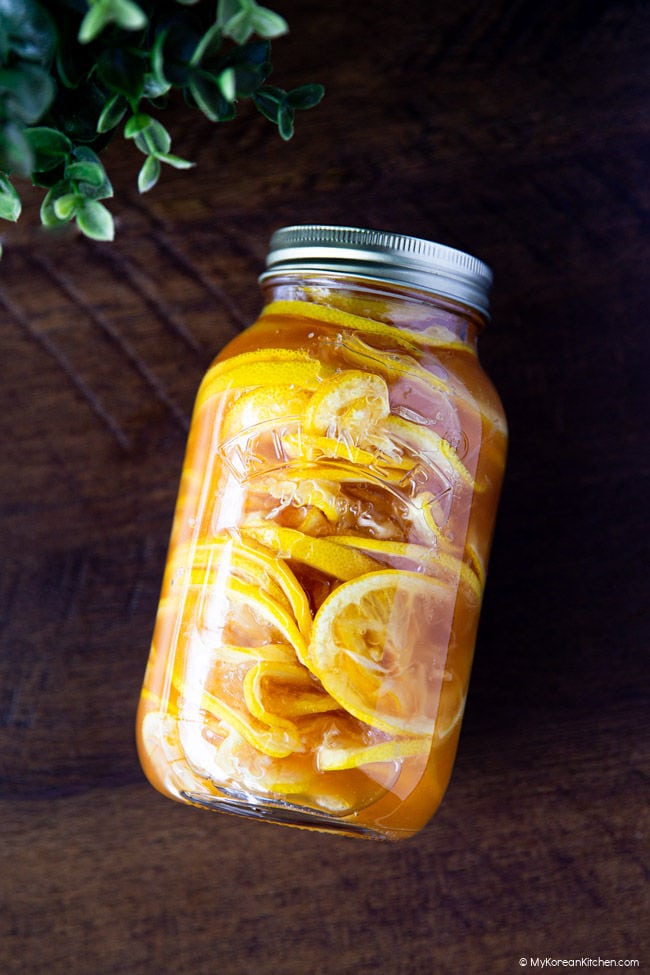
How to Enjoy Lemon Ginger Syrup
Warm Lemon Tea:
Stir 2 to 3 tablespoons of the lemon syrup into a cup of hot water. It makes a comforting tea that’s lightly sweet, tangy, and warming with a subtle ginger fragrance. It’s perfect for chilly mornings or when you need something gentle to sip on, especially if you’re feeling a bit under the weather.
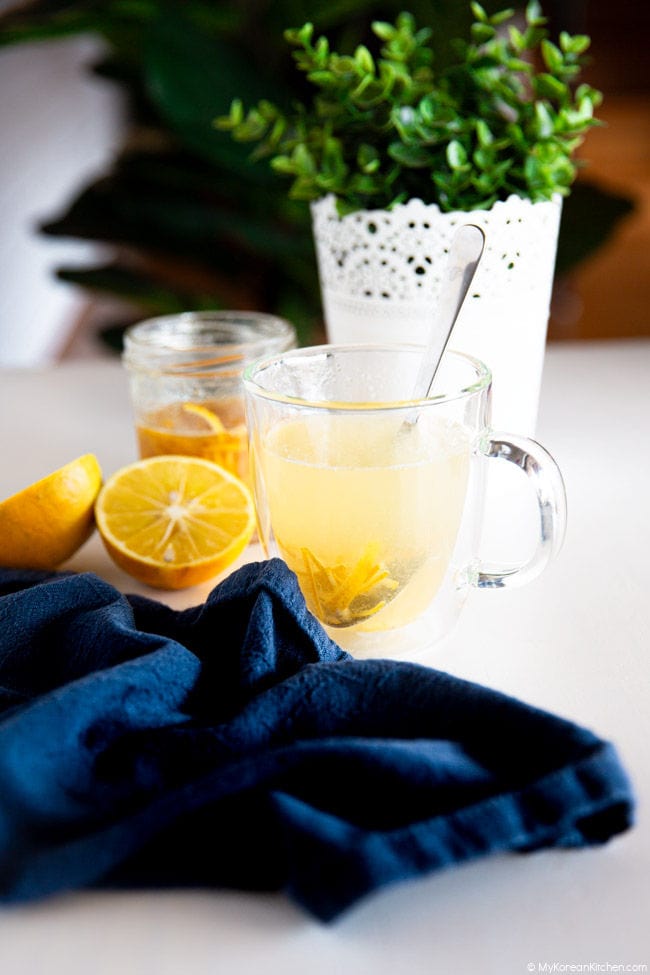
Lemonade or Sparkling Ade:
Mix 2 to 3 tablespoons with a cup of sparkling water and some ice (optional) for a refreshing, homemade lemonade. It’s a light and zesty drink that’s perfect for hot summer days.
Cooking and Baking:
This syrup adds a lovely, bright sweetness to marinades, dressings, and sauces. Try drizzling a little over salad or whisking it into a vinaigrette for a citrusy twist.
Cook’s Notes
Ratio
The classic Korean marmalade uses a 1:1 ratio of fruit to sweetener. Most people make it with white sugar, which helps draw out the lemon juice and keeps the color bright and clear. You can also make it with honey only if you prefer a more natural option, though I find the honey flavor can be quite dominant and slightly overpower the citrus. My favorite balance is a half and half mix of sugar and honey – it gives a more rounded sweetness and gentle aroma without overshadowing the lemon.
Ginger flavor
You don’t need to add ginger if it’s not your thing. Traditional lemon syrup is made simply with lemon and sugar. But if you enjoy a hint of warmth and depth, a small amount of ginger makes a lovely addition. When it’s blended and only the juice is used, the flavor stays gentle and subtle. As the syrup matures, the ginger mellows and blends beautifully with the lemon. After a few weeks, you’ll hardly notice it’s there, just a soft roundness in the flavor.
I didn’t add any water when blending the ginger to keep the juice pure and concentrated in flavor. Adding water can make blending easier, but it slightly dilutes the juice and softens the ginger’s natural heat and aroma. If your blender struggles, add just 1 to 2 tablespoons of water to help it process smoothly.
Storage
Keep the lemon ginger syrup refrigerated after the first 24 hours at room temperature. It will continue to develop a deeper flavor over the next few days. Always use a clean, dry spoon when scooping to prevent contamination. For the best taste and freshness, enjoy within 2 to 3 months.
Other Korean Tea Recipes You Might Like
Yuja Tea (Yuja-cha, 유자차) – Made from Korean citron preserve (yuja cheong), this tea is bright, floral, and deeply soothing. Often compared to Japanese yuzu tea, it’s a classic winter favorite that warms you from the inside out.
Maesil Tea (Korean Plum Tea, 매실차) – Sweet, tangy, and lightly fragrant, this tea is made from green plum syrup (maesil cheong). It’s wonderfully refreshing served cold in summer, but you can also enjoy it hot for a bright, gently warming drink on cooler days.
Korean Ginseng Tea (Insam-cha, 인삼차) – Earthy and gently bitter with a hint of natural sweetness, this traditional Korean ginseng tea is known for its invigorating and restorative qualities. It’s often enjoyed to boost energy and warm the body, especially during cooler months or when you need a little pick me up.
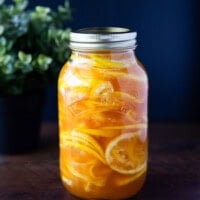
Lemon Cheong (Korean Lemon Syrup)
Ingredients
- 640 g lemons (22.6 oz, about 5 to 6)
- 60 g fresh ginger (2.1 oz)
- 350 g honey (12.3 oz)
- 350 g white sugar (12.3 oz)
Instructions
- Prepare and slice the lemons. Scrub the lemons thoroughly in hot water with a little vinegar and baking soda to remove any wax or residue. Rinse well and pat them completely dry with kitchen paper. Then slice them thinly and remove all the seeds, as they can make the syrup taste bitter.
- Prepare the ginger. Peel the ginger and either finely grate it or blend it until finely minced (slice it thinly first if using a blender). Wrap the grated or blended ginger in clean muslin or cheesecloth and squeeze firmly to extract the juice.
- Combine everything. In a large mixing bowl, combine the lemon slices and ginger juice. Add the sugar and honey, then mix gently until all the lemon slices are evenly coated and the sugar starts to dissolve.
- Pack. Using clean tongs, pack the mixture neatly into a sterilized glass jar. Seal the lid and let it sit at room temperature for 24 hours to help the sugar dissolve and the flavors meld.
- Store and serve. After 24 hours at room temperature, give the jar a gentle stir or shake to help the sugar dissolve. Then transfer it to the refrigerator. Shake it gently every now and then while it matures to keep the mixture evenly combined. The lemon syrup will be ready to use after 3 days. Store it in the fridge and enjoy within 3 months.
Notes
Serving Suggestions
Warm Lemon Tea - Stir 2 to 3 tablespoons of lemon syrup into a cup of hot water. It makes a lightly sweet, tangy, and warming tea with a gentle ginger note — perfect for chilly mornings or when you need something soothing to sip. Lemonade or Sparkling Ade - Mix 2 to 3 tablespoons of syrup with a cup of sparkling water and some ice for a refreshing, homemade lemonade. Bright, zesty, and perfect for hot days. Cooking & Baking - Add a spoonful to marinades, dressings, or sauces for a touch of citrusy sweetness. It’s lovely drizzled over salad or whisked into a vinaigrette.Nutrition Info (per serving)
The nutrition information shown is an estimate provided by an online nutrition calculator. It should not be considered a substitute for a professional nutritionist’s advice.
